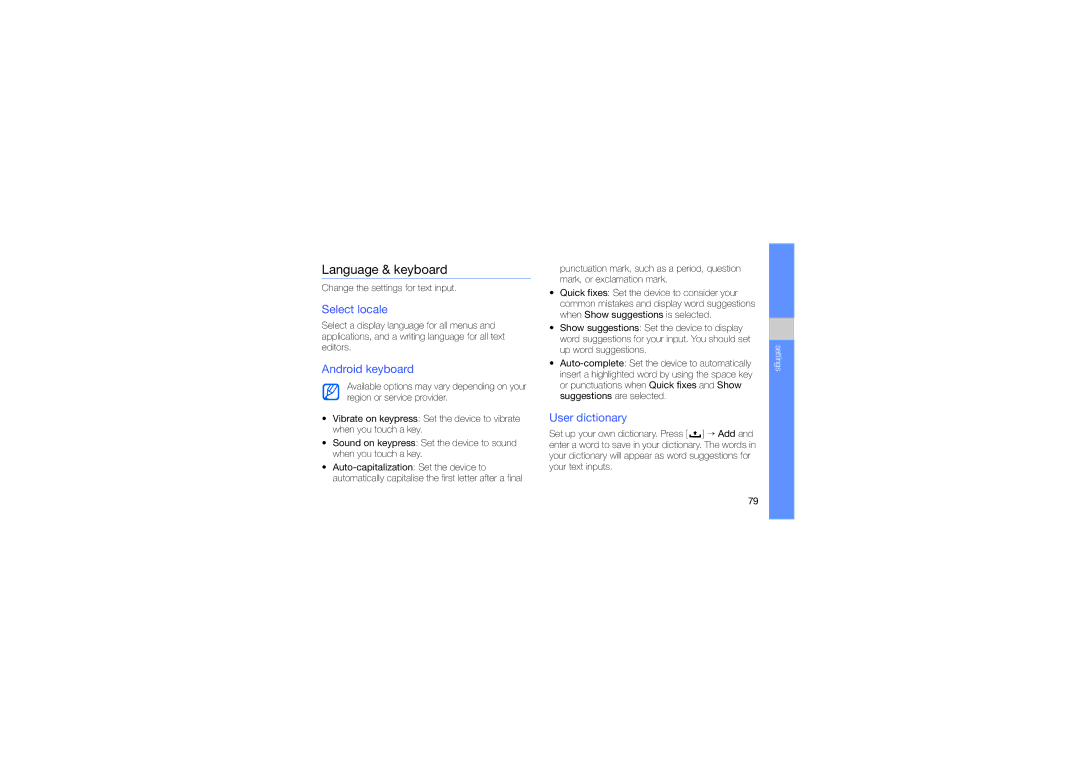GT-I5700HKASER, GT-I5700UWAXEZ, GT-I5700HKAVVT, GT-I5700HKAAMN, GT-I5700UWAFOP specifications
The Samsung GT-I5700 series, commonly known as the Samsung Galaxy Spica, was a mid-range smartphone that marked Samsung's early foray into the Android operating system. Released in late 2009, this device positioned itself as an affordable option for users looking to experience the burgeoning world of Android smartphones.One of the main features of the GT-I5700 series is its 3.2-inch AMOLED touchscreen display, which offered vibrant colors and decent visibility even in bright sunlight. The resolution of 240 x 400 pixels might seem modest by today’s standards, but during its time, it provided a satisfactory viewing experience for multimedia content and casual browsing.
Powered by the Android 1.5 Cupcake operating system, the device was equipped with a 800 MHz processor, which allowed for smooth navigation and operation of various applications available in the Android Market. The GT-I5700 also boasted 128 MB of RAM and 512 MB of internal storage, expandable through a microSD slot, catering to users who needed additional space for their photos, music, and applications.
In terms of photography, the GT-I5700 featured a 3.2-megapixel rear camera. While lacking advanced features found in contemporary devices, such as autofocus or flash, it allowed users to capture decent quality photos and videos, reflecting the needs of the average smartphone user at the time.
Connectivity options included 3G support, Wi-Fi, and Bluetooth, providing users with multiple ways to stay connected, whether through mobile data or wireless networks. The device also came with built-in GPS, which was a significant advantage for navigation purposes.
The battery capacity of 1500 mAh ensured reasonable longevity, allowing users to keep in touch throughout the day without frequent recharges. Energy efficiency was a key consideration, as the smartphone was designed to handle basic tasks without excessive power drain.
The Samsung GT-I5700 series represented an important step in the evolution of smartphones, offering a blend of functionality, affordability, and user-friendly design. Although it has been surpassed by later models equipped with cutting-edge technology, its legacy is evident in the comprehensive features it offered at the time.

